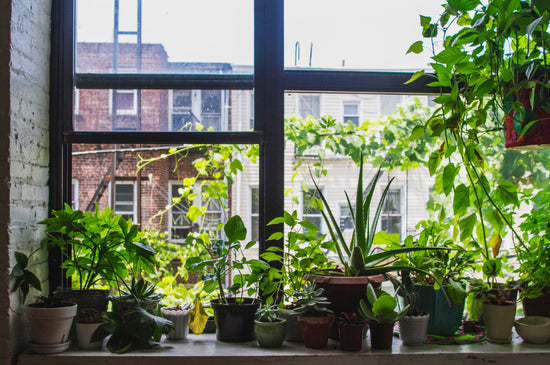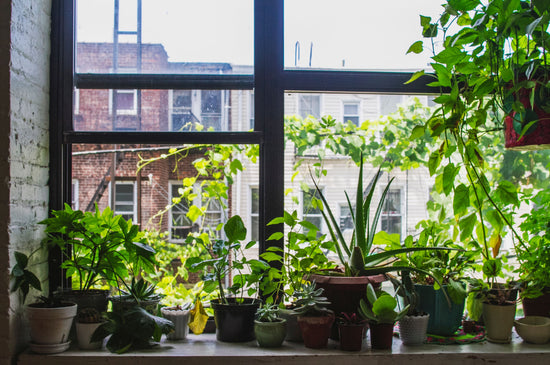Repotting 101: When, Why, and How to Give Your Plants Room to Grow
Introduction: The Art of Repotting Your Houseplants
Repotting is a crucial yet often overlooked aspect of houseplant care. Whether you’re dealing with a fast-growing Lifesaver Cactus, a majestic Monstera deliciosa, or a compact Spider Plant, understanding when and how to repot your plants can make the difference between thriving greenery and struggling roots. Repotting allows your plants to grow, improves soil quality, and prevents root-bound issues. Explore Wekiva Foliage’s collection of houseplants and supplies to find everything you need for this essential plant care task.
1. Why Is Repotting Necessary?
Repotting serves multiple purposes that directly impact your plant’s health and growth.
- Provides Room to Grow: As plants grow, their roots expand. When confined to a small pot, roots become bound, limiting access to nutrients and water.
- Refreshes Soil: Over time, soil loses its nutrients and compacts, reducing aeration and drainage. Fresh soil replenishes essential nutrients.
- Prevents Disease and Pests: Old soil can harbor pathogens or pests that affect plant health. Repotting introduces a clean, pest-free environment.
- Improves Aesthetics: Upgrading to a stylish new pot can elevate the visual appeal of your plants and space.
2. When Should You Repot?
Knowing when to repot your houseplants is key to avoiding unnecessary stress on the plant.
-
Signs It’s Time to Repot:
- Roots are growing out of the drainage holes or top of the soil.
- Water drains too quickly through the pot.
- Soil looks dry, compacted, or depleted.
- The plant appears top-heavy or is outgrowing its container.
- Growth has slowed despite proper care.
- Seasonal Considerations: Spring and early summer are the best times to repot, as plants are actively growing and can recover quickly. Avoid repotting during dormancy in fall or winter.
3. Choosing the Right Pot and Soil
Selecting the right pot and soil is critical for a successful repotting experience.
-
Pot Selection:
- Choose a pot 1-2 inches larger in diameter than the current one.
- Ensure the pot has proper drainage holes to prevent waterlogging.
- Consider materials like ceramic, terracotta, or plastic based on your plant’s moisture needs.
-
Soil Selection:
- Use soil tailored to your plant type. For example, succulents and cacti like the Lifesaver Cactus need well-draining soil, while tropical plants like the Philodendron thrive in moisture-retentive mixes.
- Enrich the soil with organic matter or perlite for improved aeration.
4. Step-by-Step Guide to Repotting Your Plants
Follow these simple steps to ensure a smooth repotting process.
Step 1: Prepare Your Supplies
Gather a new pot, fresh soil, gloves, and tools like a trowel or scissors.
Step 2: Remove the Plant
Gently remove the plant from its pot by tipping it sideways and loosening the soil. Avoid tugging on the stem.
Step 3: Inspect the Roots
Trim away any brown, mushy, or circling roots using sterilized scissors. This encourages healthy growth.
Step 4: Add New Soil
Place a layer of fresh soil at the bottom of the new pot. Position the plant in the center and fill the sides with soil, leaving space at the top for watering.
Step 5: Water Thoroughly
Water the plant until excess water drains out, settling the soil around the roots.
Step 6: Adjust Placement
Place the repotted plant in a location with suitable light and humidity levels for its species.
5. Common Mistakes to Avoid
Avoid these pitfalls to ensure a stress-free repotting experience for your plants.
- Overpotting: Using a pot that’s too large can lead to overwatering and root rot.
- Repotting Too Often: Repot only when necessary to avoid unnecessary stress on the plant.
- Skipping Root Pruning: Neglecting to trim damaged roots can lead to long-term health issues.
- Using Garden Soil: Regular garden soil can compact too quickly and doesn’t provide adequate drainage for houseplants.
6. Post-Repotting Care Tips
Repotting can stress your plants, so take these steps to help them recover.
- Watering: Water lightly until the plant acclimates to its new environment. Avoid overwatering.
- Light: Place the plant in indirect light to prevent further stress. Avoid direct sunlight for the first week.
- Monitoring: Watch for signs of shock, such as wilting or yellowing leaves. These symptoms often resolve within a few days.
Conclusion: Help Your Plants Thrive with Proper Repotting
Repotting is more than just transferring a plant to a bigger pot—it’s about giving your greenery the tools to thrive. By understanding when and how to repot, you’ll ensure your plants stay vibrant, healthy, and ready to grow. Ready to upgrade your plant’s home? Shop our collection of houseplants and pots at Wekiva Foliage to find the perfect fit.
FAQ: Repotting Houseplants
1. How often should I repot my houseplants? Most plants need repotting every 1-2 years, but fast growers may require annual repotting.
2. Can I reuse old soil when repotting? It’s best to use fresh soil to ensure nutrients and avoid potential pests or diseases.
3. What should I do if my plant goes into shock after repotting? Provide gentle care by watering sparingly, keeping it in indirect light, and avoiding further disturbances.
4. Do all plants need drainage holes? Yes, drainage holes prevent overwatering and root rot, especially for moisture-sensitive plants like succulents.
5. Can I repot during winter? It’s best to wait until spring or summer when plants are actively growing and can recover more easily.





